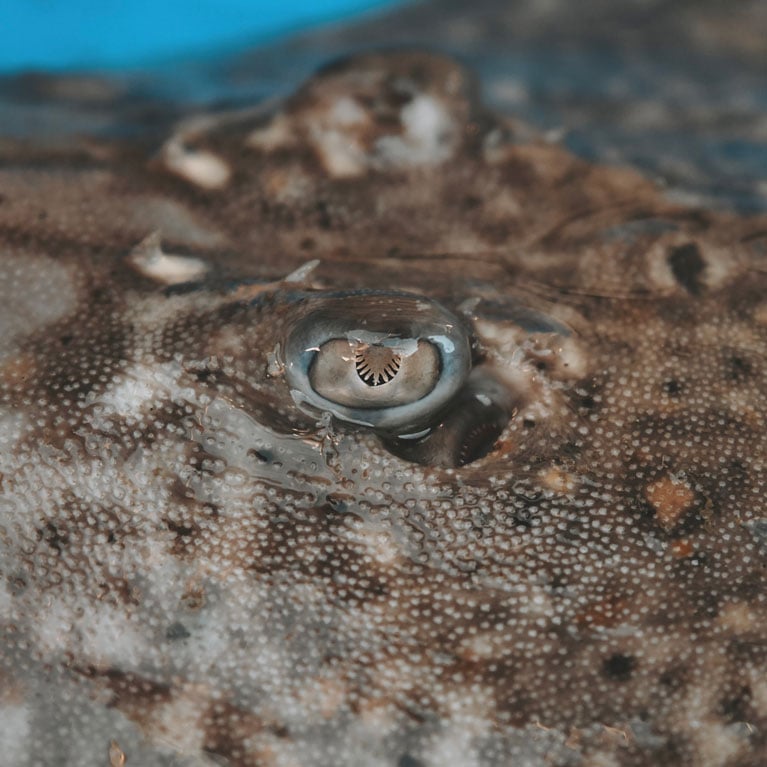Tracking Denmark’s thornback rays
The ‘Forgotten of the North’ project is redressing the critical dearth of knowledge about thornback rays in Danish waters. Kim is using acoustic tagging to monitor their movement patterns and identify migration routes, aggregation sites and the highest-use areas that would need protection. Without this information, very little can be done to influence effective policies and guide management interventions that can halt the recent decline in this species. Kim also wants to ascertain if aggregating thornback rays around the island of Læsø are mating or pupping and to make inroads into more effective education about this species in Denmark.
I was born and raised just outside Quebec City in Canada, where my exposure to the aquatic world was mostly around local lakes and rivers. Back then, our annual trips to the beaches of Maine inspired my love for the underwater world, but little did I know I would dedicate my life to that very world. I pursued an undergraduate degree in animal physiology and then a Master’s degree in fish biology and ecology, during which I was first exposed to the world of tracking. Tracking animals underwater is challenging; GPS doesn’t work there, so other methods are...


The Forgotten of the North
To determine important habitats and identify migration routes of thornback rays within the Kattegat using telemetry, with particular interest in mating and pupping areas.
Thornback ray populations have fallen sharply in recent decades, but so little is known about the species in Denmark that it is almost impossible to provide advice for the relevant policy agencies to act upon. Rays and skates tend to mature late, so this aspect of their life history, in combination with intense exploitation, has significantly diminished recruitment. Finding and protecting areas of importance for mating and pupping would be a great step forward to conserving these rays in Danish waters.
The thornback ray, along with many other skate and ray species, has been exploited extensively in the North Sea area. This exploitation, in combination with the species’ life-history traits such as late maturation and low fecundity, has resulted in a severe decline in abundance. Moreover, our lack of knowledge about the species only exacerbates its vulnerability. The Forgotten of the North project aims to remedy this situation by tracking thornback rays in Danish waters using acoustic tags, data storage tags and physiological sampling. The objective is to pinpoint the habitats that are critical for the species, particularly those where the rays mate and pup. Doing so would help us assess when and where these fish are vulnerable, and when they most need protection. The hope is to use the knowledge acquired to influence policy and management so that we can better protect thornback rays in waters where they have been overlooked for decades.
- To safely capture and tag thornback rays in Danish waters and track them for approximately two years to assess migration routes and habitat use for the first time in Denmark.
- To determine whether the large aggregation of thornback rays recently observed around the island of Læsø represents a mating or pupping event.
- To communicate and disseminate information about a largely overlooked species in Denmark, using policy reports for relevant stakeholder organisations and public outreach by partnering with a local aquarium.

